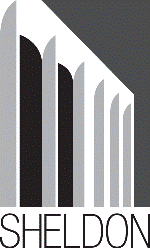Fine and Performing Arts, Hixson-Lied College of

Sheldon Museum of Art: Catalogs and Publications
Date of this Version
2011
Citation
Sheldon Statewide Exhibition, 2010-2011, Sheldon Museum of Art, University of Nebraska- Lincoln
Abstract
Messaging: Text and Visual Art explores the use of language in art. Text in art mirrors the language of our daily lives, drawing on newspapers, advertisements, and personal stories. This exhibition focuses on how artists since the 1960s have used text in their work The term "messaging" in the title evokes changes in communications that have occurred in recent years. The technological advances that have been underway since the 1990s not only brought about unprecedented changes in the fields of science and industry, but they are also transforming our language.
"Messaging" has become synonymous with technology-a term used to describe electronic communication. In this exhibition, we can see how artists since the 1960s have anticipated the short, sometimes cryptic-seeming messages typical of contemporary communications. "Messaging" is often associated with instant messaging or text messaging. The term is an example of the ways language adapts to changes in culture and new modes of expression. Works in this exhibition demonstrate how artists use language in formal and expressive ways. Texts sometimes appear handwritten, printed mechanically, or digitally presented.
In the decades leading up to the I 960s, artistic practices took a defiant stance toward mass culture or kitsch. During the I 940s, Abstract Expressionism turned away from popular culture. In his 1940 essay "Towards a Newer Laocoon," art historian Clement Greenberg argued for the separation of painting from mass culture or kitsch culture. A problem for Greenberg was with the insistence that language was the essential vehicle for understanding one's world. Instead, Abstract Expressionist artists such as Mark Rothko and David Smith, valued the act of creating art over the act of articulating an artist statement. Many Abstract Expressionist artists declined to comment on or speak of the influences within their work, regarding it as providing uniquely sUbjective experiences for viewers.


Comments
All images are copyright by the original artists. Publication copyright 2011 The Regents of the University of Nebraska